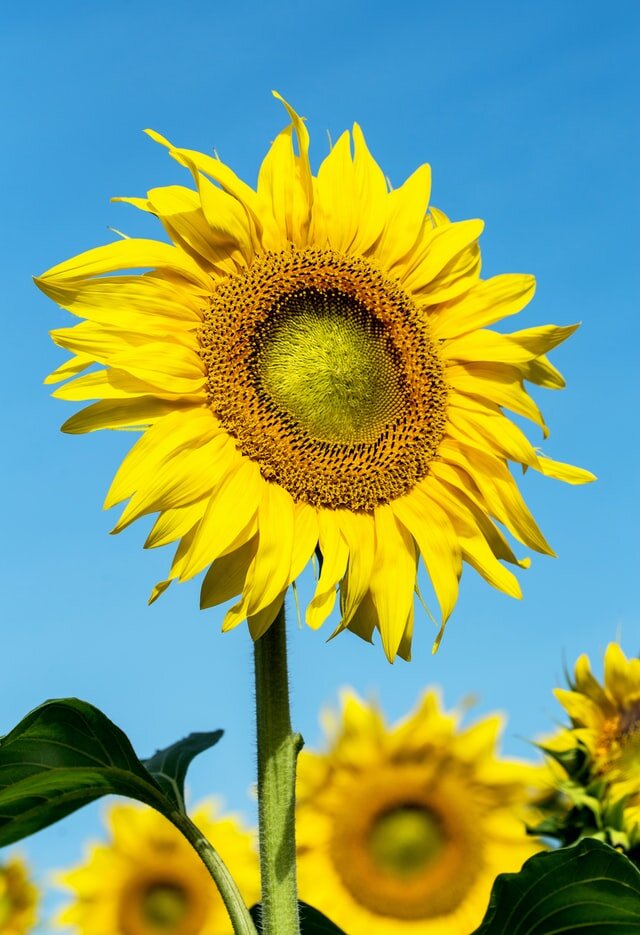Helios, the Greek sun god, drives a horse-drawn chariot across the sky. His warmth makes this planet habitable, his light determines the rhythm of our lives, and every week pivots around the day that's dedicated to him.
We honor Helios every week on Sunday. However, once a year during the Winter Solstice, we pay tribute to him and bring his light into the world.
Fun fact: Helium is named after Helios.
Sunday
Today we think of Sunday as a day off. A day to spend with family, catch up on chores, watch some TV.
Yet it's been observed as the holy day of the divine Sun from the era of ancient Babylon and pagan Assyria. The Roman Emperor Julian worshipped Helios.
It still remains a good opportunity to refocus your devotional practice and carve out some time to honor the Sun God.
What is Heliogenna?
Heliogenna is a modern Hellenists pagan festival. A nine-day celebration of the sun happens every year during the Winter Solstice. The days are divided into three segments.
The first three days are referred to as Sunset and the last three are Sunrise. The three days in the middle contain the actual solstice day and are called night.
To celebrate, light a candle each night of the holiday. Extinguish the candle before you go to bed for safety reasons. Yellow candles during Sunset, black candles during night, and yellow candles for Sunrise.
You can also worship Helios’s sisters, Eos (Goddess of the dawn), and Selene (goddess of the moon).
This fun holiday is easy to incorporate with your other solstice activities. Read our article Celebrate Yule for more ideas.
Correspondences
Symbols: Sun, chariot, horses, aureole, whip, globe, cornucopia, ripened fruit
Ruling Planet: Sun
Ruling Element: Fire
Season:
Corresponding Star Sign:
Animals/Mythological Creatures: Rooster, White horse
Birds:
Plants: Black poplar, Heliotrope
Crystals:
Herbs & Scents: frankincense
Tools:
Color: Gold, Yellow
Day: Sunday
Tarot:
Deities: Clymene the Oceanid, Ra, Selene
Egyptian And Roman Influence
We know the Greeks were influenced by the Egyptians. Helios is very similar to Ra, the Egyptian Sun God. Ra flies across the skies in a boat and goes through the body of the sky goddess Nut and is reborn in the morning.
Helios and chariot depicted on the dome of the entrance hall of the Széchenyi Bath, Budapest. Photo credit: Zairon
Helio’s Horses
There is some controversy about the names of Helio’s horses but the most accurate seems to be:
Eous (by him the sky is turned)
Aethiops (as if flaming, parches the grain)
Bronte (Thunder)
Sterope (Lightning)
Devotion to Helios
You can please Helios simply by incorporating solar elements into your day. Wear bright colors like white and yellow, for example. If you wear jewelry, pick out something golden.
Altar Ideas for Helios
Burning some incense (or even easier, incense sticks)
A bright yellow sunflower or bunch of black-eyed Susan’s makes a great offering. Place them on your altar or table.
A food offering. A pastry and some berries are good choices.
Such small offerings may be consumed in the process of dedicating them or placed in a space dedicated for the occasion (like a vase for flowers)
A statuette of Helios is a plus, but not a requirement, as the deities are invisibly present everywhere, especially when called upon.
Offer up a prayer and give thanks for the sun.
Sand from the beach.
Magic
Helios, the Greek god of the sun, holds a prominent place in the realm of magic. He is associated with the magic of witches.
As the embodiment of the sun's energy and light, Helios represents the ultimate source of power and vitality. In ancient times, practitioners of magic would seek Helios' favor to enhance their spells and rituals, harnessing his fiery essence to bring about profound transformations.
Whether it be healing spells, divination rituals, or manifestations of prosperity, invoking the energy of Helios brings an undeniable intensity to any magical workings. His radiant presence infuses practitioners with a renewed sense of purpose and connection to the cosmos, making Helios an influential figure in the world of magic.
What counts is setting up your altar space and beginning to make offerings – lavish decorations can come later. A spontaneous prayer or a short ancient hymn can also be seen as precious living offerings.
If you are new to setting up an altar check out our article Altars: An Introduction
Get Outside
What better way to honor Helios than to get outside on a beautiful sunny day!
Enjoy your backyard or go to a park. Run around under the sun and appreciate its warmth.
Take a hike and admire the flowers. Flowers like all plants need the sun to grow and bloom. Thank Helios for his role in photosynthesis.
Take Away
At its fullest, then, the weekly offering to Helios would consist of a hymn and prayer, a food offering (e.g., some pastry) placed on the altar, a libation of water or wine into the vessel, and incense wafting over the shrine, all watched over by an image of the god.
But don't let the perfect be the enemy of the good: sincere thoughts are better devotion than a perfectly Instagrammable shrine.



